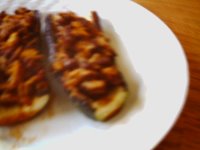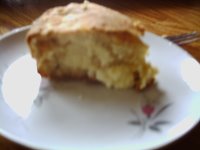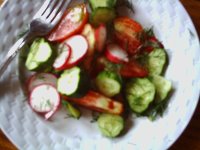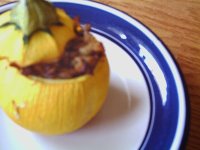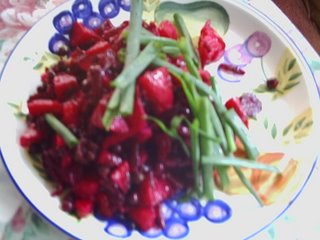 It's 90+ degrees in Madison on Sunday afternoon, and where do the boyfriend and I stop for lunch? At Pel'meni*. This tiny whole-in-the-wall on State St. sells nothing but pelmeni--Russian--Siberian, really--dumplings. I love the spartan look of this little eatery: four tables, four steaming pots and a blackboard menu. On the menu are meat and potato pelmeni. Five dollars gets you a styrofoam box full of dumplings, a piece of (forgettable) rye bread, and condiments like sour cream, chopped cilantro, curry powder and a spicy chili sauce.
It's 90+ degrees in Madison on Sunday afternoon, and where do the boyfriend and I stop for lunch? At Pel'meni*. This tiny whole-in-the-wall on State St. sells nothing but pelmeni--Russian--Siberian, really--dumplings. I love the spartan look of this little eatery: four tables, four steaming pots and a blackboard menu. On the menu are meat and potato pelmeni. Five dollars gets you a styrofoam box full of dumplings, a piece of (forgettable) rye bread, and condiments like sour cream, chopped cilantro, curry powder and a spicy chili sauce.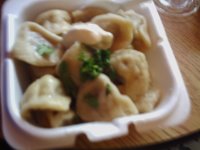
The pelmeni are good, although not all that much better than the frozen dumplings I buy at the Russian store. An order feeds one moderately hungry person--we ended up having a pelmeni feast with four orders. As we ate we daydreamed about opening a dumpling eatery of our own. Our working name is "Dumpling House," and we'd sell pelmeni, vareniki (big dumplings filled with farmer's cheese, cherries, sourkraut or potatoes) and manti (Uzbek steamed lamb dumplings). I'd totally steal the blackboard menu, too.
After pelmeni I accidentally on purpose steered us toward the University of Wisconsin Union Terrace* where we tried some Babcock chocolate ice cream--made on campus at the Babcock dairy plant. It was perfectly acceptable but doesn't hold a candle to, say, frozen custard from Kopp's. Still, the Union Terrace is a pretty great place to mull over ice cream at this time of the year. Plenty of tables in the shade, a nice lake view and fresh-faced high school grads on tour, sober for now...

*Pelmeni
505 State St.
Madison, Wis.
(608) 250-1976
Open on Sundays, despite what the online listings say.
*Union Terrace
800 Langdon St.
Madison, Wis.


